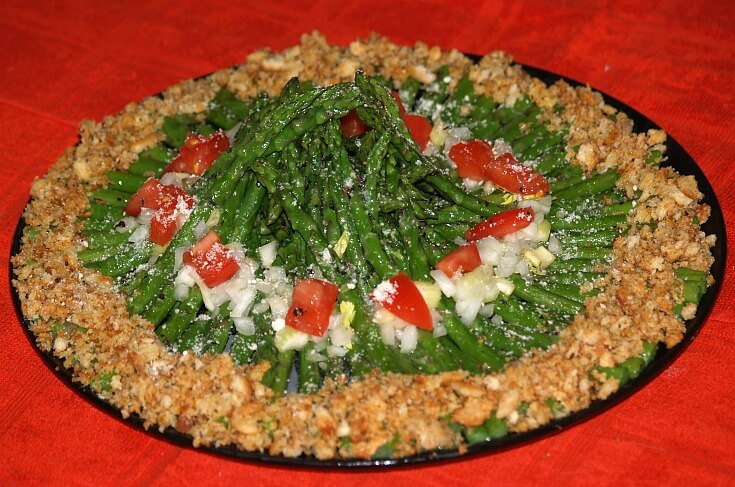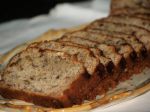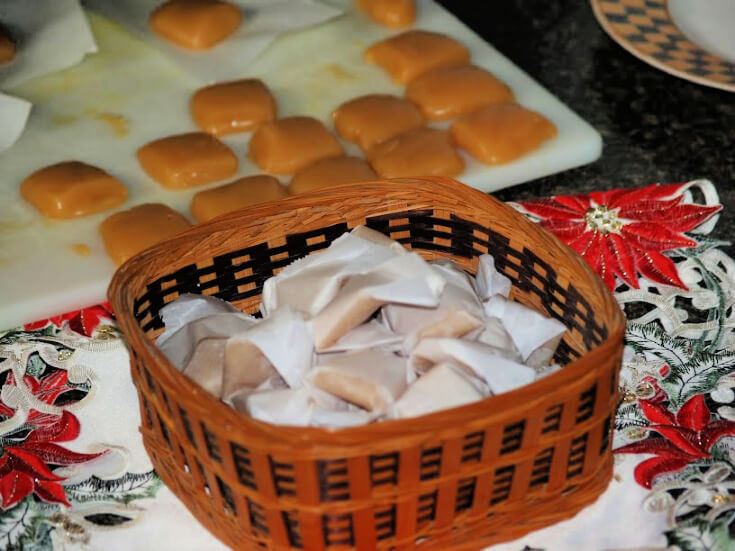- Painless Cooking
- International Foods
- Italian Food History
History of Italian Food
The history of Italian food can be traced all the way back to ancient Rome. The diet back then for the average people was very plain and simple in keeping with the strictness and severity of the early Christian customs.
They upheld the moral values of frugality and simplicity. The Italian food menu was based on some type of bread and an abundance of legumes, beans, lentils, turnips, beets, cabbage, lettuce, figs, prunes and grapes. The people in the country might add eggs to their diet.
Meat was present only on the tables of the rich. Cooking Italian food for the very wealthy consisted of things like roast of swan, parrot or ostrich, dormouse cooked in honey as well as the traditional Italian foods. There are records of parties and banquets overflowing with roasted meats and a variety of rich Italian dessert recipes and foods. Even within the walls of the monasteries and convents, there was no shortage of game, vegetables and sweetmeats.
From the fifth century on, food customs of the barbarian culture began to creep into the Italian food menu. The history of Italian food tells us that in the Middle Ages an international cuisine began. For the first time local and national boundaries were overcome in the Italian food customs. In cooking Italian food, spices such as saffron, cinnamon, pepper, nutmeg, cloves, and ginger were always used in seasoning soups, meats and breads. This clearly indicated other cultures were creeping in the traditional Italian foods.
The renaissance period developed a distinct difference between the cooking Italian recipes of the north and the southern Italian food menu. In the north, some type of animal fat was used and the south region used olive oil. It became fashionable to be a gourmet and discuss the pleasures of the palate.
Formation of national states, rise of strong new middle class and the migration into the cities from the countryside brought new history of Italian food. Cooking and eating today goes directly back to the traditional Italian foods that were established during the nineteenth century.
A national use of the tomato and potato became popular in the nineteenth century. Also in this time came the invention of a machine to make spaghetti and macaroni. Wines and cheeses took on definite importance.
Still today cooking Italian foods is about fresh ingredients.
Open air markets are everywhere offering the finest selections.
Careful preparation is done to bring out the essential flavor and
character of the ingredients at hand. Food from Italy is identified not
only for its pasta and Italian pizza, but other national specialties such as sausages, prosciutto and cheeses.
You can still see two basic styles in the Italian food menu. Pasta is the staple of the south, made without eggs and served with robust tomato sauces. In the north the pasta is made with eggs. Sometimes rice, beans and polenta are often served in place of the pasta. The dishes are much milder in the north, using creamy sauces and butter in place of oil.
Northern and Southern Italy produces wine in abundance. Dishes with a strong regional flair will also be complimented with a wine from that area. Meats are seasoned with the intent to enhance the flavor but never to disguise the flavor.
From the history of Italian food, the influence is felt in kitchens around the world, especially in American homes. Immigrating Italians brought with them a style of cooking that has been totally embraced. Italians love of good food is the appreciation of simple perfect products. The sweetness of the fresh ripe fruit, the wedge of well-aged cheese gives the Italian way with food it’s down to earth foundation.
Italian food customs is to have one main meal, either at midday or in the evening. Bread is always on an Italian table at meal time. For special occasions an Italian food menu will begin with one or more vegetables, meat and fish dishes; an antipasto assortment of a sit down appetizer course. Next a soup or rice dish will be served with an appropriate wine. The main course is meat, poultry or fish served with vegetables. Diners then enjoy a salad of cheeses and fruit that follows. The meal may end with a small cup of rich espresso.
Throughout the history of Italian food, meals are very simple except for the main meal. Italian breakfast food could be a small frittata or a fresh roll. For the other meal you might have soup with fruit and cheese. Later in the evening after a walk, one might have a cup of espresso with an Italian cream puff, slice of Italian cheesecake or a serving of panna cotta. Holiday time such as Easter in Italy you could have a slice of panatone.
ASPARAGUS PLATTER
The history of Italian food reminds us that fresh vegetables have always been very popular in the cuisine.
- 2 Packages frozen asparagus spears (Thawed) NOTE: I purchase fresh asparagus from Sam’s or Costco and steam.
- 1/3 to ½ Cup butter (Melted)
- ½ Cup dry coarse seasoned breadcrumbs
- ¼ Cup finely chopped onion
- ¼ Cup finely chopped celery
- 1 Small tomato (Chop)
- ½ Teaspoon dried basil
- ½ Teaspoon dried thyme
- ¼ Teaspoon salt
- 2 Tablespoons grated Parmesan cheese
Arrange on a round 12 inch microwave plate in spoke fashion with tips pointed to center.
Combine half of melted butter with breadcrumbs; arrange around edge of plate.
Arrange onion, celery and tomato around middle of the asparagus.
Sprinkle vegetables with salt, basil and thyme; drizzle remaining butter of vegetables.
Cover plate with plastic wrap; poke holes in plastic.
Place plate in microwave on high for 10 to 11 minutes until asparagus is tender and hot.
NOTE: Halfway through cooking give plate a half turn.
Sprinkle platter with grated cheese and serve.
LEMON RISOTTO RECIPE (or saffron risotto recipe below) The use of Risotto is important in the history of Italian food
This versatile risotto comes out of the history of Italian food recipes. I say versatile because it can be made two different ways; the first with lemon is a Roman dish. The saffron recipe comes from Milan.
- 2 Tablespoons plus 2 teaspoons butter
- 2 Tablespoons olive oil
- ¼ Cup minced onion
- Grated rind of 1 lemon
- 1 ½ Cups uncooked Arborio rice
- 4 ½ Cups chicken stock
- ¼ Cup plus 2 teaspoons lemon juice
- ½ Cup freshly grated Parmesan cheese
Heat 2 tablespoons butter and olive oil over low; add onion and lemon rind and sauté for 5 minutes.
Add rice and stir to coat; turn up heat and toast rice stirring for 30 seconds.
Add ½ cup of the chicken stock; reduce heat and stir until stock is absorbed.
Add more stock, ½ cup at a time; add more only after it has been absorbed.
After all stock has been absorbed (about 20 to 25 minutes) add ¼ cup of lemon juice.
The rice should be tender; if not add a little more warm water and cook until it is.
Stir in Parmesan cheese and remaining butter; cook briefly to blend.
Season with salt, pepper and remaining lemon juice; serve immediately.
TO MAKE SAFFRON RISOTTO
- Omit lemon rind and lemon juice; increase chicken stock to 4 ¾ cups.
- Add ¼ teaspoon saffron threads or 1/8 teaspoon saffron powder to hot chicken stock.
FRIED BREAD RECIPE
Fried doughs are an important part of the history of Italian food. They begin as being very plain, then seasoned and in recent years sugar was added.
- 1 Large unsliced loaf of sandwich bread
- 1 Pound thinly sliced mozzarella cheese
- 5 Ounces prociutto or 6 oil packed anchovy fillets, rinsed, patted dry and chopped
- ½ Cup flour
- 1 Cup milk
- 3 Beaten eggs with pinch of salt
- Oil for frying
Slice loaf into 6 thick slices and trim off the crusts; with sharp knife slit each slice ¾ way through middle to make a pocket.
Stuff each with slices of cheese and anchovies or prociuttoFlour each stuffed bread lightly; dip quickly in the milk and arrange in a deep dish.
Beat eggs and pour over the top; leave to set until eggs are absorbed in the bread.
Heat oil and deep fry two at a time until golden brown on both sides.
Drain on paper towels.
TURKEY MINESTRONE RECIPE
The history of Italian food recipes shows the use of locally grown vegetables and locally raised meats.
- 2/3 Cup chopped onion
- 2 Tablespoons olive oil
- ½ Pound ground turkey
- ½ Pound hot Italian turkey sausage links, casings removed
- ½ Cup minced fresh parsley
- 2 Cloves minced garlic
- 1 Teaspoon dried oregano
- 1 Teaspoon dried basil
- 2 Cans (14 ½ ounces each) Italian stewed tomatoes
- 6 Cups chicken broth
- 1 Medium sliced zucchini
- 1 Package (10 ounces) frozen mixed vegetables
- 1 Can (16 ounces) kidney beans, rinsed and drained
- 1 ½ Cups cooked macaroni
- 2 Tablespoons cider vinegar
- ½ Teaspoon salt
- ¼ Teaspoon black pepper
Sauté onion in oil until tender; add next 6 ingredients and cook until meat is done.
Add tomatoes, broth, zucchini and mixed vegetables; cook over low for 5 minutes.
Add beans, macaroni, vinegar, salt and pepper; simmer about 5 minutes.





